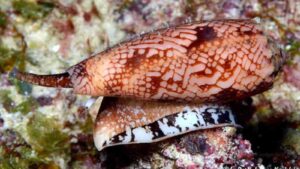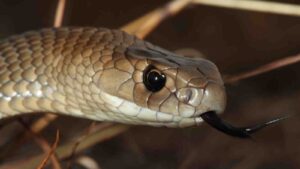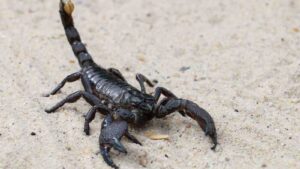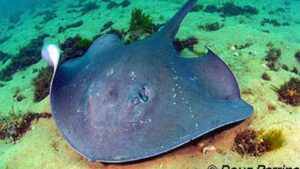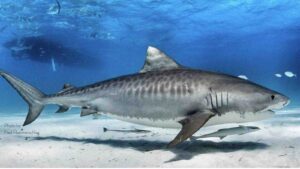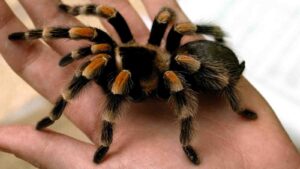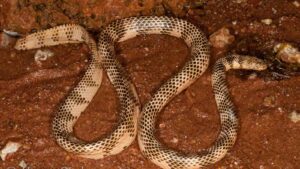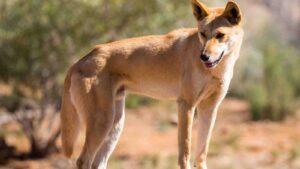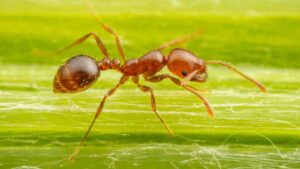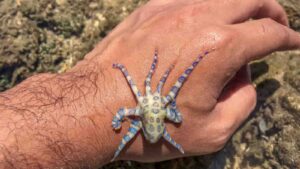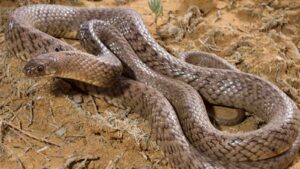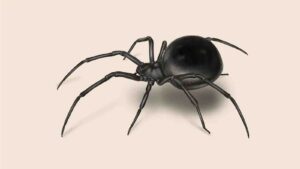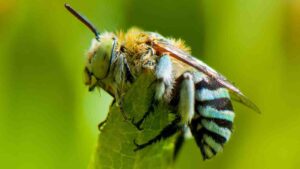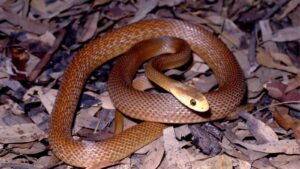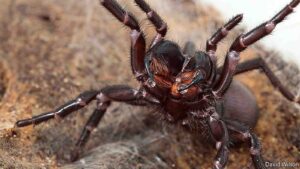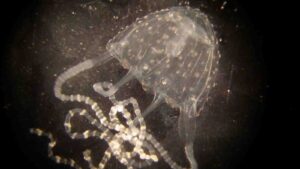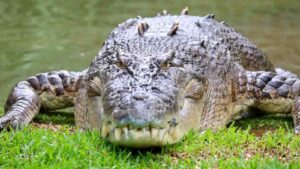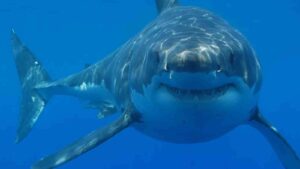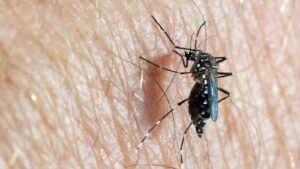Top 20 most dangerous animals in Australia
Summary
Top 20 most dangerous animals in Australia. Australia is a continent with more dangerous animals than anywhere else in the world. The land is inhabited with snakes, spiders, sharks, wild dogs, and many more. And all of them are extremely […]
Top 20 most dangerous animals in Australia. Australia is a continent with more dangerous animals than anywhere else in the world. The land is inhabited with snakes, spiders, sharks, wild dogs, and many more. And all of them are extremely dangerous for almost any living creature. Every year, numerous people die after encountering them. Let’s find out the top 20 most dangerous animals in Australia.
Video: Top 20 most dangerous animals in Australia
Conus Geographus
We are starting our list with the representative of mollusks common in tropical waters around the world. Most of them are found among the coral reefs of the Australian coast.
At first glance, there’s nothing in their appearance that foreshadows adversity. They look charming and beautiful. And indeed, many of them are quite harmless to humans, but there are also ruthless killers.
The most dangerous sea animal in Australia is the geographic cone, which lives in the Great Barrier Reef waters. Each year, 2-3 people die from the bites of mollusk killers in Australia. Death occurs within just a few minutes.
Eastern Brown Snake
About 3000 people suffer from snake bites every year in Australia. The Eastern Brown Snake is especially famous for its speed and aggressiveness.
They appear almost all over the mainland, excluding only the southernmost part of it. They may or may not be large, but it doesn’t matter. Still, they are one of the most dangerous animals in Australia.
Sometimes just one of their bites is enough to say goodbye to life. These snakes have plenty of poison—3 to 400 mg. And when biting, they release it in large doses. It enters the blood almost immediately, and the victim does not have much time to call for help.
Video: Top 20 most dangerous animals in Australia
Scorpions
Scorpion is another of Australia’s dangerous residents. Its main weapon is a venom sting at the tip of the tail, which makes it one of the most poisonous animals in Australia. Unlike many other species, it grabs its prey and immediately starts to devour it. His claws have a muscle to help hold the victim. During capture, he gives a deadly stinger.
Their bites are very painful, especially when it comes to triplet scorpion. They’re more dangerous for children than for adults. In Australia, several children have died from the bite of this scorpion in the last couple of years.
Short-tail Stingray
This sea inhabitant caused the death of the famous Australian TV presenter, Steve Irwin, who died during the shooting of the movie “The most dangerous inhabitants of the ocean,” receiving a fatal blow to the heart.
Stingrays, like sharks, are a subclass of plate gillnets. At the end of the tail, there are 1 or 2 long poisonous thorns, which can easily pierce human skin.
If a man accidentally stepped on such a stingray, buried in the sand, he would instantly get a shot in the leg with a mighty thorn. It penetrates deep, and the poison gets into the bloodstream quickly.
Tiger Shark
The tiger shark has very sharp teeth with jagged edges that represent the perfect murder weapon. The upper jaw is not much different from the lower jaw, so these sharks have almost any bait in their teeth, even turtle shells. Once they take the prey, they begin to twist it furiously from side to side so that the teeth can cut through the flesh.
They are also characterized by great curiosity and a complete lack of legibility in food. They have to try everything on their tooth, so they attack almost anything they meet on their way. That’s why they’re one of the most dangerous animals in the world.
Cassowaries
Cassowaries are known as the most dangerous birds in the world. Every year 1-2 people die in Australia from the clutches of these “birds.” They can kill an enemy with one blow of their powerful legs.
The main danger is that they are very fast, strong, and completely unpredictable. Cornered Cassowaries are especially dangerous, and if you get close to their kids, do not expect mercy. Its main weapon is long and very sharp triangular claws. With these claws, the bird can easily open a man’s flesh, damaging his vital organs.
Unlike other large wingless birds, cassowaries can strike in different directions, both back and forth.
Tarantula Spiders
Their name fully justifies these members of the spider family. Due to their huge size, they are able to hunt even small birds. But still, their digestive system is not designed for permanent meat nutrition.
It’s the biggest spider in Australia. All kinds of tarantulas are known to be another representative of Australia’s most poisonous animals, while some have more toxicity. Helitzers are very long and sharp. They can be as long as 1 centimeter. Spiders use them to inject poison into the victim’s body. The bites are very painful, but they’re not always fatal to humans. Within 6-8 hours after the bite, the person feels weak and is thrown into the fever.
Aipysurus duboisii
Australia’s waters are home to around 30 species of sea snake. Some of them have much more poison than land species. They are all extremely dangerous, but the Aipysurus duboisii is rightly considered the most dangerous.
Like many sea snakes, however, it has well-developed lungs, so it is able to stay without air for an hour! The body itself has a cylindrical shape, but the tail is flattened from the sides. This shape allows the snake to swim perfectly underwater.
The most interesting thing is that their bites for humans are most often not dangerous, as less than 10% of them use poison.
Wild Dingo Dog
These dogs are experienced hunters and killers. Hundreds of people have already been victims of these dogs, two of them with a sad outcome.
Dingo dogs are very fast and have good stamina. A small pack of these Australian animals can chase almost any creature. They’re usually hunting in groups. They have bigger fangs than domestic dogs at least, so they can easily grab their prey and tear it apart with the same ease.
The dingo is not an ordinary dog, as many people think. It’s a wild, and therefore dangerous, animal.
fire ants
A dangerous species that usually attacks its victim with an entire colony. Hundreds of thousands of insects can live in one anthill, and if disturbed, they all attack the offender, biting him wherever possible.
These ants have two main weapons: a poison located in a pit and jaws, with which they firmly blend into their abuser. Their poison causes severe allergic reactions, which can be fatal in rare cases. A blister and swelling appear at the bite site after some time.
All this is accompanied by nausea, dizziness, vomiting, and allergic reactions, even in people who have never had it before.
blue-ringed octopus
Mal, but deadly, this sea creature bites with a beak that looks like the beak of a parrot. The poison of one such bite is enough to kill 26 people.
They wait for their victims in an ambush. They’re hard to spot because these octopuses are almost merging with the sand in a calm state. They grab their prey, tightly hold it with their tentacles, and strike them with a deadly bite. The poison immediately strikes the nervous system, and the victim dies quickly.
When it comes to a person, the toxins paralyze the arbitrarily contracting muscles, and he cannot breathe, resulting in death by strangulation.
Pseudonaja nuchalis
Of all Australian snakes, the Pseudonaja nuchalis is the most aggressive. Even with the slightest threat, it starts to defend itself.
These snakes live throughout Australia and represent one of the most poisonous species. They like dry, warm places, but they can also be found near swamps.
They bite rarely, but aptly. Poisonous teeth are tiny, only 2-3 mm, and very little poison gets during a bite. But even this amount is enough to cause human death because of its toxicity. Probably one of the strongest poisons in the world.
Black Widow Spider
This spider is considered to be one of the deadliest animals in Australia for a reason. About 2,000 Australians a year suffer from the bites of this spider. There are already 15 deaths on its account. Because of its small size and pale color, people just might not notice it and accidentally hit it. In response, the spider immediately delivers a painful, poisonous bite to its abuser.
After a while, there is nausea, vomiting, and pain in the joints. However, everyone reacts differently to this poison. But even a small amount of it may be enough to kill an animal or human.
The males of this spider are quite harmless. They have tiny pincers, and they can’t bite human skin. So only females are dangerous.
Read More: Shockingly Large Creatures That Actually Exist
Bees
There are about 2000 species of bees in Australia, as well as one imported species. These insects sting only once in their lives and then die. But the consequences of their bite can be most unfortunate, especially for people with allergies.
Bee venom can cause the strongest allergic reaction: rash, nausea, headache, breathing problem. In the worst case, all this can lead to anaphylactic shock, and sometimes even death.
In healthy people, the bite site hurts and swells up, it’s normal. To avoid these terrible consequences, you need immediate adrenaline injection.
Coastal Taipan
Coastal taipans are very poisonous and incredibly fast Australian snakes, common along the coasts of the northern and northeastern part of the mainland and southeast New Guinea.
They’ve already caused 12 deaths in Australia. In agility, they can only compete with vipers and some other snakes. The Taipan is the most poisonous, and the largest snake in Australia.
They have very long teeth, up to a centimeter long, so they can’t open their mouths wide. Their poison is considered the most venomous animals in Australia. Even a slight scratch from its teeth is enough to kill a human. If it bites someone, there’s very little chance of surviving.
Funnel-web spider
This is Australia’s most dangerous spider. Its pincers are so powerful and strong that they can easily penetrate the skin and even the nail plate. It is ruthless to the abuser, so it applies the bites lightning fast and, sometimes, several times in a row. They can inject the poison directly into the bone.
They are fast enough and very poisonous. Males have six times more poison than females. It happens that death occurs in 15 minutes (in children) if the antidote is not administered in time. In adults, fatal cases from their bite are low but still exist.
Carukia Barnesi
Carukia Barnesi is the most dangerous sea stinging animal. Armed with 60 tentacles, it can kill a man in just 1 minute, and the poison of one such baby is enough to take the lives of about 60 people.
It’s inhabited by this jellyfish in the northeast and northwest Australia. It’s found both in shallow water and on the high seas.
It’ll take more time and poison to paralyze a person. The main danger is that when you swim underwater, you may get stung by several jellyfish at once. Their bite stops a person’s heart from stopping in 3 minutes. If the antidote is not administered in time, the person dies quickly.
In 120 years in Australia, about 70 people have died from jellyfish bites. They account for more deaths than sharks, crocodiles, and snakes combined.
Crocodile
Crocodiles are popular when it comes to most dangerous animals in the world. These are very violent predators. Attacking, they move so fast that the victim has no chance of salvation. During the hunt, the whole crocodile plunges into the water, with only nostrils and eyes on the surface. In the muddy waters of small rivers, this “disguise” works without fail.
75% of crocodile attacks are carried out not because of hunger, but because they protect their territory. When biting, their teeth dig deep into the body with a death grip, and the reptile begins to twirl its victim in the water until it tears them apart. In this case, death is unavoidable. The power of these jaws is unbelievable.
Big white shark
These sea creatures are second on the list of terrifying animals in Australia. Its jaws are so big and strong that they can snack a man in half. The force of pressure with which the shark compresses its jaws is almost several tons per 1 cm2.
These are the perfect machines to kill. In the course of evolution, they’ve barely changed. Their teeth are sharp as a razor. They can bite not only the thick skin of many marine animals but even their bones.
In 2000, 10 deaths were recorded from these sharks. But in the last decade, there’s been a significant decrease in this number.
Read More: 20 Most Insane Banned Water slides You Can’t Go On Anymore
Aedes
Of all Australia’s most dangerous animals, the tiny mosquito insects come first. They are the vectors of 4 diseases that kill and hospitalize thousands of Australians every year. These are tropical fever, Murray Valley encephalitis, and Ross River fever.
It spreads when a mosquito bites a person and injects its saliva into their blood, along with deadly viruses.
Ross River Fever is the most common disease on this continent. About 20,000 people have died in the last seven years because of mosquitoes and the diseases they carry.
It’s hard to believe that such small creatures can cause so much harm, pain, and suffering.
Which animal seems most vicious to you? Do you know any other dangerous species in Australia? Let us know in the comment section.
